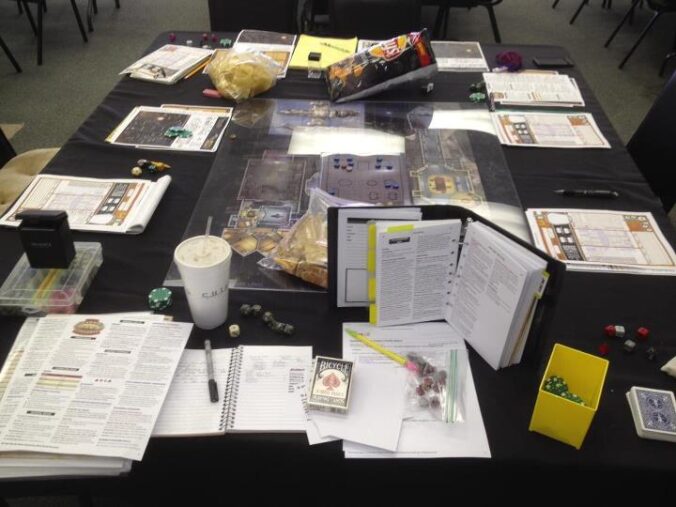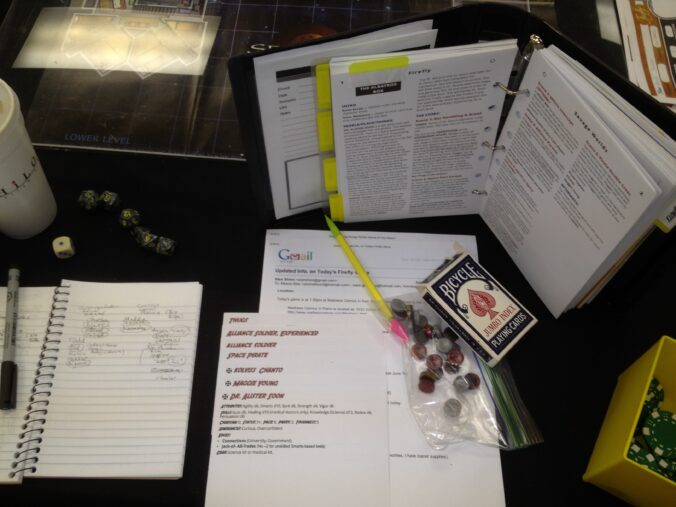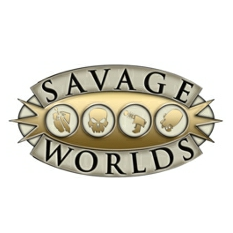I usually like a bit of backstory for my player characters. Player backstories can provide powerful game ideas for the GM.
I partucularly like the idea in Mouseguard of having ‘enemies’ so that in the players’ turn (the sandbox portion of a Mouseguard game) you have something to springboard off of.
Backstories have some problems though:
- As a GM though, I don’t usually have time to read the long (2 pages or more) backstories some people write.
- Not all players like to write long backstories.
- Some players can’t devote time outside of the game to create backstories.
- Without backstories, background information like ‘how did we meet’ is often lacking.
To remedy these issues I’ve developed what I call the Three Sentence Backstory™.
The first sentence is the character concept — this may include the character’s background, archetype, class or other information which quickly gives other players a simple summary of who the character is.
The second sentence defines the character’s connections. At the gametable I like to roll a d6 — if the results are odd, players must come up with some sort of connection between their character and the player character to their right. If the result is even, then the connection is to their left. If doing this by email before a game session, I have player’s make the connection alphabetically (a player with last name Smith makes a character background connection with the player Thoreau). I do this at the first game of a new campaign, and incrementally do it for new players who join later.
The third sentence lists the player’s biggest enemy — usually this is an NPC or perhaps a gang, mob or something else which the GM can bring into the game as a foil to your character.
Here’s an example of the Three Sentence Backstory™ in action, using Mal Reynolds from Firefly:
Sentence 1: Concept
Mal fought for the losing side in the Unification War and now finds ways to keep his ship flying while taking pot shots at the Alliance.
Sentence 2: Connections
His current crewmember Zoe served with him in the war, and fought in one of the war’s bloodiest battles, Serenity Valley.
Sentence 3: Enemies
Taking barely legal odd-jobs to stay out of poverty, Mal has had multiple run-ins with the sadistic crime lord Adelai Niska who remains Mal’s chief enemy.
On the character sheet, I may run the sentences together, so the final result would look like this:
Backstory: Mal fought for the losing side in the Unification War and now finds ways to keep his ship flying while taking pot shots at the Alliance. His current crewmember Zoe served with him in the war, and fought in one of the war’s bloodiest battles, Serenity Valley. Taking barely legal odd-jobs to stay out of poverty, Mal has had multiple run-ins with the sadistic crime lord Adelai Niska who remains Mal’s chief enemy.
Just enough to give the GM what he or she needs to spin a compelling story, limit the overly long backstory some write, give the players a shared history, and is something you can knock out in less than 15 minutes at the start of a game. Happily, this is something you can use across a variety of games regardless of setting or ruleset.
The next time I create a character sheet template I’m considering including three lines — Concept, Connections and Enemies — to support this idea.
What do you think? Would this be useful in your games?













Recent Comments